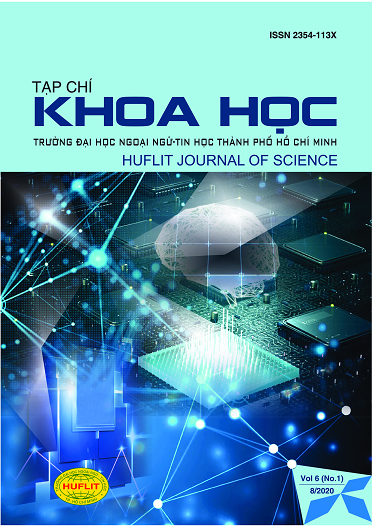A Study of Japanese phonetic for Vietnamese learners of Japanese language
-A comparative approach of linguistics in language rhythm-
Keywords:
language rhythm, syllable timed rhythm, stress timed rhythm, teaching language phonetic, PVIAbstract
This is a research study that explores the lecture of Japanese phonetic pronunciation for Vietnamese nationals learning Japanese with a comparative linguistic approach focusing specifically on language rhythm. It is crucial to lecture on the sound of Japanese (phonetics) for Vietnamese learners of Japanese because the highest demand for native Japanese teachers in Vietnam is for “improving pronunciation” given the difficulty involved with learning Japanese phonetics. There are also some practical reasons, such as demonstrating Japanese language proficiency skills in job interviews given the strong demand of Vietnamese nationals seeking better opportunities for work in addition to study of the Japanese language itself. There are few existing studies of the lecture of Japanese phonetics for Vietnamese learners of Japanese. This is especially so in the realm of comparative linguistics.
It is still a common method to divide the world's language into two sorts of language rhythm, stress-timed language, and syllable-timed language. It is not, however, proven if the world's languages can be divided as a dichotomy as there is no isochrony of the rhythm of the languages. Still, there are several suggestions for a methodology to observe the rhythm of the languages rather than one of dichotomy even though many studies still only claimed the primacy of dichotomy. This study uses a method for observing the rhythm of languages called “Pairwise Variability Index (PVI)”, a process that illustrates the inclination of the rhythm of languages. However, there is no existing information as of this writing on the construction of the language rhythm derived from the value of PVI. Thus, there is a question on how effective it is to use PVI in considering the rhythm of the language for lecturing. This study also includes a comparison of not only Vietnamese and Japanese, but also English and French.
One preceding study has concluded “Japanese mora-timed language rhythm turbulence of Vietnamese Japanese speakers speaking Japanese is the cause of the Vietnamese syllabled-timed language rhythm”. However, as mentioned above, it is not possible to know the construction of the rhythm from the viewpoint of dichotomy. Thus, this study claims that dichotomy is not the reason for the existence of syllabled-timed languages of Vietnamese. It is, in fact, the cause of the language of the rhythm of the native Vietnamese speakers.



